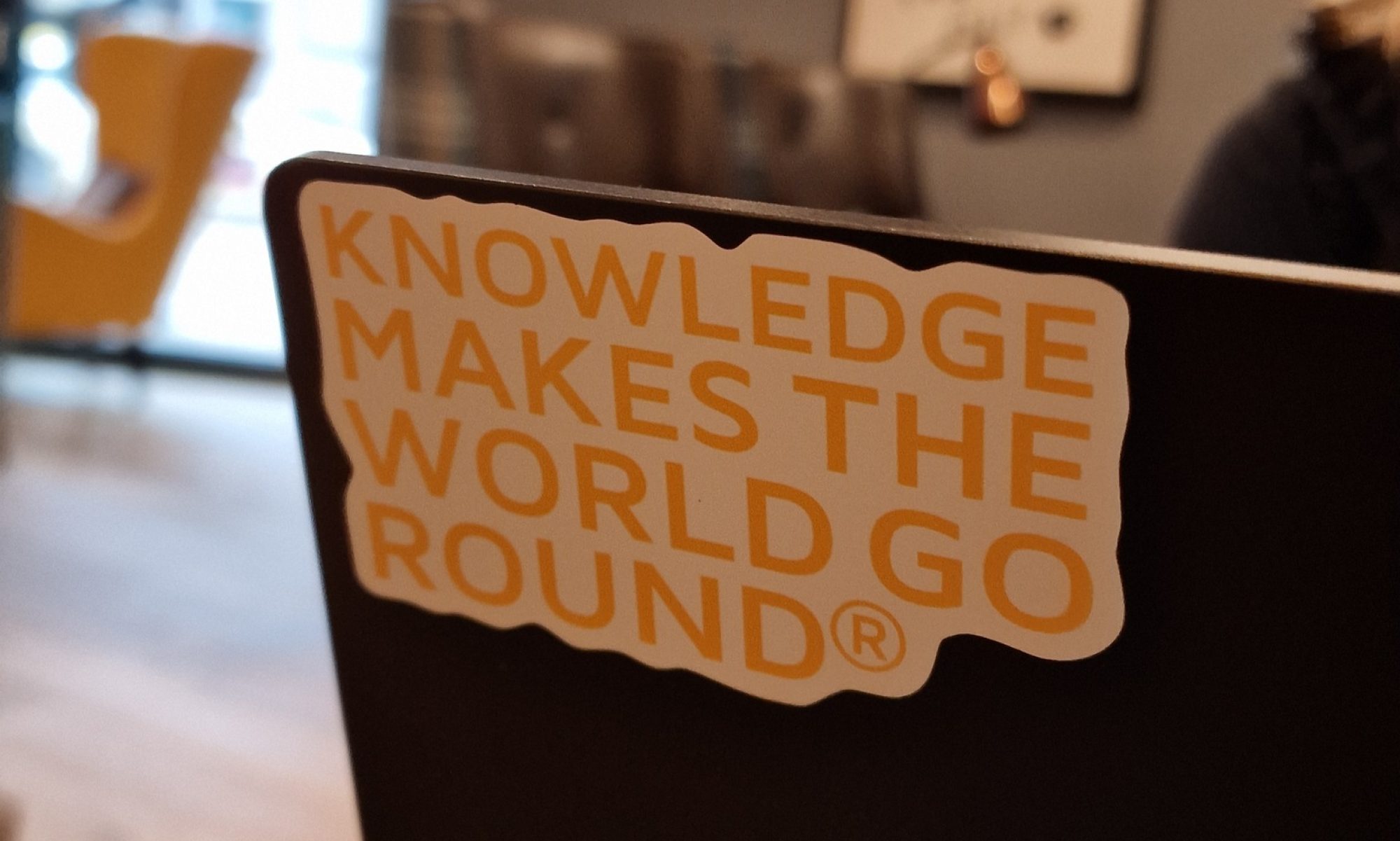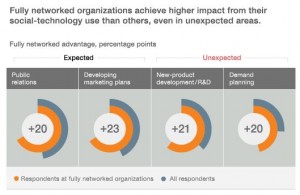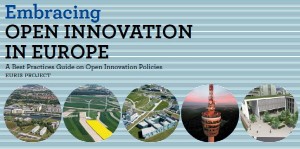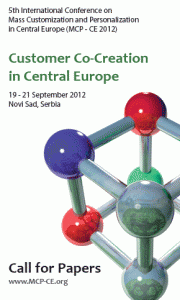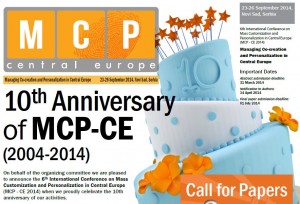 Im September findet die MCP-CE 2014 zum 6. Mal statt. Neben der eigentlichen Konferenz gibt es vorher noch einen Doktoranden-Workshop und begleitend einen Konfigurator-Workshop. Die Konferenz selbst befasst sich mit Mass Customization, Personalization und Co-Creation in Central Europe. Gemeinsam mit Maria Mikela Chatzimichailidou (PhD Candidate) und Ioannis Dokas (Ass. Professor) an der Democritus University of Thrace (Xanthi, Griechenland) habe ich ein Paper eingereicht, das sich mit Open Innovation befasst:
Im September findet die MCP-CE 2014 zum 6. Mal statt. Neben der eigentlichen Konferenz gibt es vorher noch einen Doktoranden-Workshop und begleitend einen Konfigurator-Workshop. Die Konferenz selbst befasst sich mit Mass Customization, Personalization und Co-Creation in Central Europe. Gemeinsam mit Maria Mikela Chatzimichailidou (PhD Candidate) und Ioannis Dokas (Ass. Professor) an der Democritus University of Thrace (Xanthi, Griechenland) habe ich ein Paper eingereicht, das sich mit Open Innovation befasst:
Chatzimichailidou, M. M.; Freund, R.; Dokas, I. (2014): Distributed Situation Awareness as an Open Business Model that Integrates Embeddedness and Principles of the New Economic Sociology.
Abstract: Modern societies are comprised of open systems that their internal elements interact with their environment. In modern dynamic, digitalized, and decentralized environments Embedded Open Innovation is the new innovation paradigm. In order to develop a substantial amount of gravitational embedding force and knowledge, for commercial ends among others, both living and technical components are considered to be prerequisites. These diverse elements are integrated in multi-agent socio-technical systems exhibiting an open process of information fusion. As an indispensable system property, Situation Awareness impacts on knowledge creation, and signifies the awareness of the “exactly right” for the system as a whole. Thus, we argue that the combination of Distributed Situation Awareness and Embedded Open Innovation can contribute to build an open business model based on the socio-technical perspective. These ideas are combined under the notion of New Economic Sociology, which bears human-centered economic transactions, social motives, and shared interests for the social structure.
 Wer es bisher noch nicht gesehen hat: Die Konferenzpaper zur 6. MCP-CE 2014 (Mass Customization and Personalization in Central Europe) sind in der Zwischenzeit online verfügbar. Auf der Konferenzseite können alle 38 Paper heruntergeladen werden. Es war schön zu sehen, wie gut sich die von mir initiierte Konferenzreihe entwickelt hat. Zusammen mit einer Kollegin und einem Kollegen aus Griechenland (Universität Thrace in Xanthi) haben wir folgendes Thema untersucht:
Wer es bisher noch nicht gesehen hat: Die Konferenzpaper zur 6. MCP-CE 2014 (Mass Customization and Personalization in Central Europe) sind in der Zwischenzeit online verfügbar. Auf der Konferenzseite können alle 38 Paper heruntergeladen werden. Es war schön zu sehen, wie gut sich die von mir initiierte Konferenzreihe entwickelt hat. Zusammen mit einer Kollegin und einem Kollegen aus Griechenland (Universität Thrace in Xanthi) haben wir folgendes Thema untersucht: